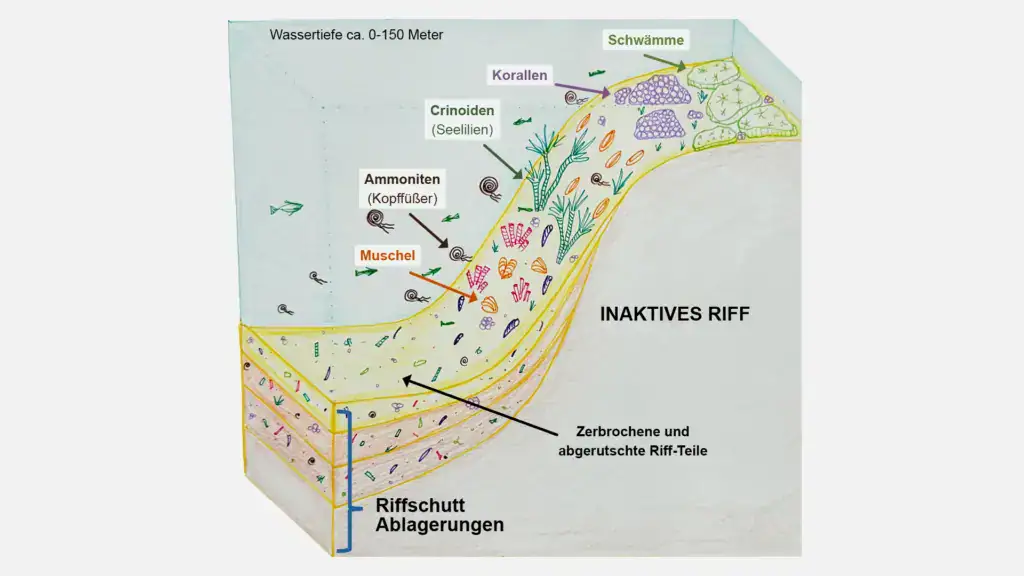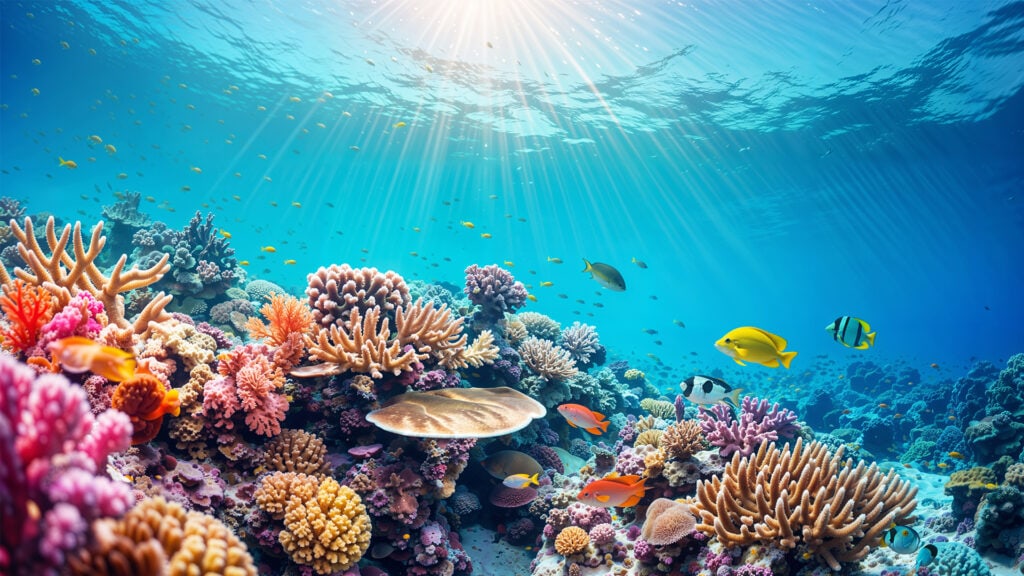The exposed rock surface at this station is far more than just a collection of ancient skeletal remains – it tells the fascinating story of a long-gone ocean.
The Upper Rhaetian Limestone is a reef limestone consisting mainly of the calcareous remains of reef-building organisms such as corals, sponges and calcareous algae. These creatures grew in a shallow, warm sea, often in coastal regions, and formed impressive reefs over time.
However, not all fossils in this rock were preserved in their original growth position in the reef (“in situ”). Rather, processes such as waves, currents and storms have caused parts of the reef to break up and be deposited as reef debris. These deposits consist of larger, well-preserved fossils such as shells and stony corals as well as fine material that has been ground down to the size of a sand grain.

Deposits of reef debris were discovered here, containing both larger, well-preserved fossils such as bivalves and stony corals, as well as fine, fragmented material. (Image source: Own illustration)
- (a) & (b): Cross-section of well-preserved thick-shelled bivalves (megalodonts), in whose curved shells sand and reef debris have accumulated.
- (c) & (e): Cross-section of a coral with visible branching structures.
- (d): Cross-section of a thick-shelled bivalve and the spiral structure of a snail (gastropod) are visible.
- (f): Longitudinal section through a large “hoofprint clam” (megalodont): The heart-shaped structure shows a cut through the interior of the shell, whose shape resembles a hoofprint—hence the fossil’s name.

Schematic representation of a reef with a sloping seabed, where reef debris accumulates in layered deposits within the sediment. The debris consists of larger, well-preserved fossils such as shells and stony corals, as well as finely crushed remnants of the reef. (Image source: Own illustration)
Hidden among the easily recognizable macrofossils in the fossilized reef debris – such as stone corals and mussels – are numerous microfossils, including foraminifera and algae remains. This picture of the primeval underwater world is complemented by the remains of crinoids, snails, corals, sponges and many other sea creatures.
As you discover fossils at this station, you can imagine how a living reef once grew here, evolved and ultimately destroyed by nature. Each finding tells a story of growth and decay, of movement and change – a window into our planet’s past.

